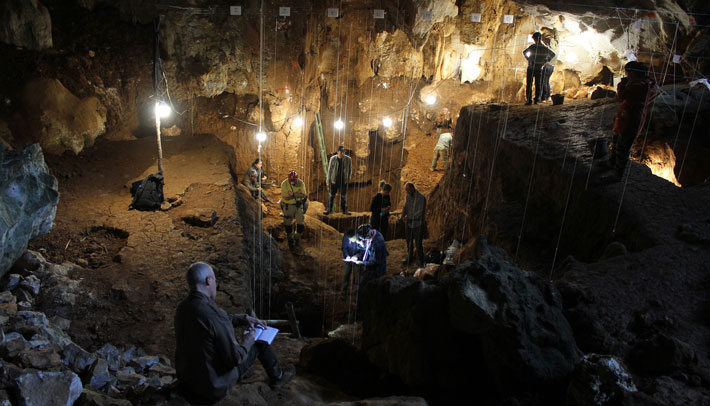 VIENTIANE, LAOS—Science Magazine reports that two modern human bones dated to between 68,000 and 86,000 years ago have been found in Tam Pà Ling, a cave in the mountains of northern Laos, by a team of researchers led by Laura Shackelford of the University of Illinois Urbana-Champaign. The dates were obtained with optically stimulated luminescence (OSL), which estimates when the sediment was last exposed to light. The newly discovered pieces of shin and forehead bones were found in a deep layer, along with animal teeth thought to have come from goats or sheep. The teeth were dated with uranium-series dating and uranium-series/electron spin resonance dating, which measures how much radioactive uranium from the soil has migrated into tooth enamel over time and compares the ratios of uranium isotopes, which decay at different rates, to estimate how long the sample has been buried. Previous genetic studies have suggested that today’s non-Africans are descended from migrants who left Africa between 50,000 and 60,000 years ago, so it is unlikely that these individuals made a large contribution to modern populations. Shackelford and her colleagues will continue to search for modern human remains in the Laotian mountains. Read the original scholarly article about this research in Nature Communications. For more on discoveries from Tam Pà Ling, go to "Settling Southeast Asia."
VIENTIANE, LAOS—Science Magazine reports that two modern human bones dated to between 68,000 and 86,000 years ago have been found in Tam Pà Ling, a cave in the mountains of northern Laos, by a team of researchers led by Laura Shackelford of the University of Illinois Urbana-Champaign. The dates were obtained with optically stimulated luminescence (OSL), which estimates when the sediment was last exposed to light. The newly discovered pieces of shin and forehead bones were found in a deep layer, along with animal teeth thought to have come from goats or sheep. The teeth were dated with uranium-series dating and uranium-series/electron spin resonance dating, which measures how much radioactive uranium from the soil has migrated into tooth enamel over time and compares the ratios of uranium isotopes, which decay at different rates, to estimate how long the sample has been buried. Previous genetic studies have suggested that today’s non-Africans are descended from migrants who left Africa between 50,000 and 60,000 years ago, so it is unlikely that these individuals made a large contribution to modern populations. Shackelford and her colleagues will continue to search for modern human remains in the Laotian mountains. Read the original scholarly article about this research in Nature Communications. For more on discoveries from Tam Pà Ling, go to "Settling Southeast Asia."
Traces of Early Modern Human Migrants Found in Southeast Asia
